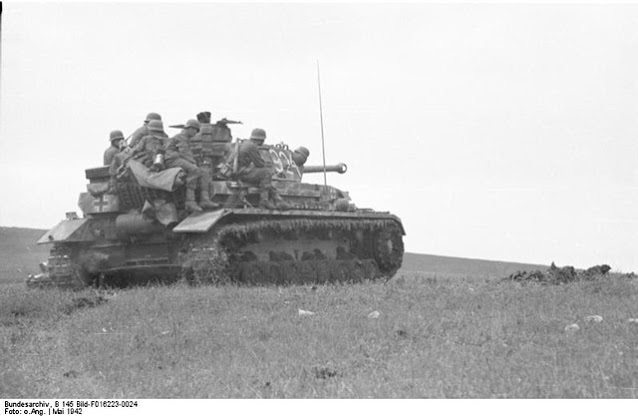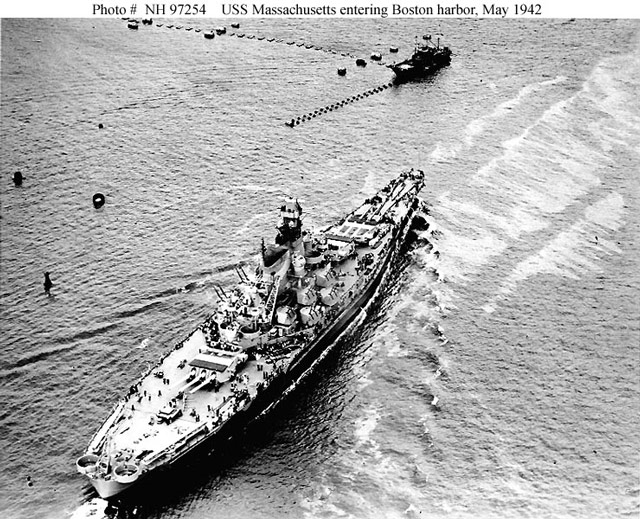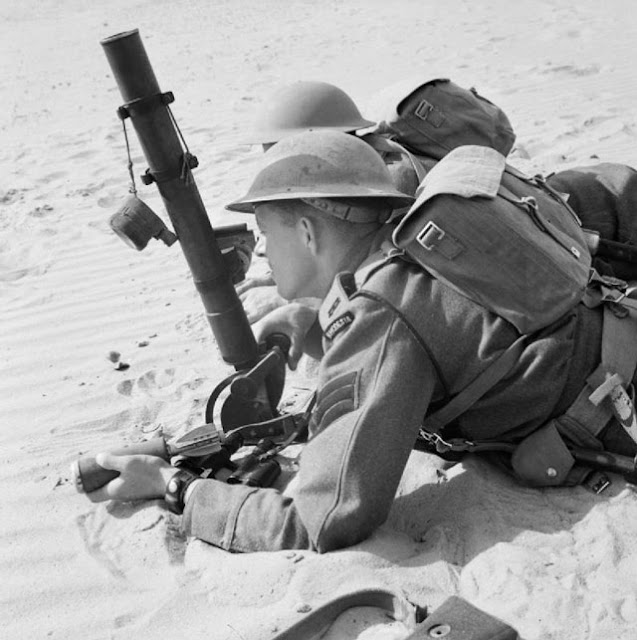Tuesday 12 May 1942
 |
| A wartime press photograph of Prime Minister Winston S. Churchill on 12 May 1942. He is addressing the Parliamentary Home Guard in London while carrying his gas mask. |
Battle of the Pacific: Despite the failure of Operation Mo during the Battle of the Coral Sea, the Japanese continue with Operation RY on 12 May 1942. This was intended as a follow-up to the Port Moresby invasion, but since that invasion was stopped by the US fleet, Operation Ry takes center stage. This is an invasion of Nauru and Ocean Island for their phosphate deposits.
Despite the fact that the Japanese invasion fleet is at sea from Rabaul, Operation RY already is in trouble. Just as the invasion of Port Moresby had to be postponed indefinitely (to 3 July), Operation RY also is postponed today. This is due to the sinking of the Japanese flagship, minelayer Okinoshima, by S-42. While the Japanese don't know this, US Admiral "Bull" Halsey is fast approaching with his Task Force 16 and is almost ready to engage the invasion force. The Japanese fix a new date of 17 May for the Operation RY invasion, but Halsey aboard USS Enterprise and accompanying aircraft carrier Hornet (the units that launched the Doolittle Raid on 18 April) will have something to say about that if it proceeds.
 |
| The U.S. Navy escort carrier USS Charger (AVG-30) at anchor on 12 May 1942. She is painted in Camouflage Measure 12 (Modified) (Naval History and Heritage Command NH 55073). |
Battle of the Indian Ocean: The monsoon season begins today in Burma, slowing operations just as the spring thaw ("rasputitsa") has done recently in the Soviet Union. The Japanese expand their control in eastern Burma by crossing the Salween River. Their next objective in this region is Kengtung. The 2nd Burma Infantry Brigade completes a long march north through the Myitha Valley and joins with the Chin Hills Battalion, Burma Frontier Force about 15 miles south of Kalemyo. Here, the 2nd Brigade can take trucks to the border town of Tamu where the British are assembling a frontier force to defend India.
Eastern Front: Marshal Semyon Timoshenko launches a major offensive to recover the Ukrainian city of Kharkov, a major industrial center and the fourth city of the Soviet Union. His military commissar is native Nikita Khrushchev, who has great powers as Timoshenko's political "minder." Timoshenko has built up a 3:2 advantage in infantry and 2:1 in tanks at the attack points.
The Soviet attack begins with an hour-long artillery barrage at 06:30, then a twenty-minute air assault. This effective preparation sharply limits the Wehrmacht's response, and the subsequent ground assault makes good progress. There are two main lines of attack, from the Volchansk (north of Kharkov) and Barvenkovo (south) areas, which are intended to converge and form a pincer trapping the German forward units. The infantry units make such good progress during the morning that Timoshenko prepares his second echelon, usually kept in reserve for an eventual breakthrough, for immediate use.
While caught largely by surprise (some Germans apparently did have some knowledge that an attack was coming), the Sixth Army under General Paulus recovers fairly quickly. The Luftwaffe has sufficient fighters in the area to establish aerial supremacy, but the bombers remain to the south in Crimea with General Erich von Manstein's 11th Army. Thus, the effectiveness of German control of the air is less than it could be. The Wehrmacht infantry also is able to launch some local counterattacks, including three near the Soviet village of Nepokrytaia.
The attack is proceeding north and south of Kharkov, with the main effort to the south. The goal is to engulf the city. Soviet tanks range within eleven miles of the city. To protect the city, Army Group South commander Field Marshal Fedor von Bock releases the 23rd Panzer Division and the 71st and 113th Infantry Divisions. At the end of the day, the Red Army has advanced 10 km (6.2 miles). However, it fails to score a clean breakthrough.
 |
| Russia, Crimea, Kerch peninsula - Panzer IV (turret number 924) and mounted infantry in combat, May 1942 (Federal Archive B 145 Fig. F016223-0024). |
The May 1942 Soviet Kharkov offensive is doomed to failure even before it begins for a very specific reason. The Germans at Adolf Hitler's insistence have been flooding the Army Group South rear areas with troops preparing for the grand summer offensive, Case Blue, that he intends to be the decisive campaign of the war. Paulus has been planning a preliminary offensive in the exact area of the Soviet attack, Operation Fridericus, and thus has units that are at full strength. In fact, the three divisions that Bock releases today to save Kharkov were intended to spearhead Fridericus and thus are fully staffed and ready for action. The real question is what effect this Soviet attack will have on Hitler's grand strategy for the summer, but the Red Army offensive is driving into a dead end.
At Fuhrer Headquarters, General Franz Halder writes in his war diary,
Heavy attacks at Volchansk and in VIII Corps sector against Sixth Army, objective Kharkov. The enemy used 100 tanks in each attack and has scored considerable initial successes. Air Force units must be diverted from the Crimea to this battle area. 23rd Armored Division is released for commitment at the front.
While Halder sees the necessity of transferring Luftwaffe units to the Kharkov battle, Hitler insists that they remain in Crimea until that battle is completely won.
In Crimea, Manstein's Operation Trappenjagd is proceeding toward a quick and successful conclusion. The Germans have trapped the Soviet 51st Army in a pocket on the northern half of the line (at the Parpach narrows) while other units (22nd Panzer Division and the 132nd and 170th Infantry Divisions) are making good progress toward the ultimate objective, Kerch. One German unit, the Grodeck Brigade, already has penetrated the second Soviet defensive line (the "Sultanovka Line") and that line shows little chance of holding once the other Wehrmacht divisions attack. Halder writes, "Good progress on the Kerch peninsula: 29,000 prisoners, 220 guns, 170 tanks, etc."
European Air Operations: There are no operations due to inclement weather.
 |
| USS Massachusetts. "Entering Boston Harbor, Massachusetts, after leaving the Fore River Shipyard at Quincy, 12 May 1942. Photographed from an altitude of approximately 400 feet. Note harbor defense net system at top, with a Net Tender (AN) in attendance." (Naval History and Heritage Command NH 97254). |
Battle of the Atlantic: Wolfpack Hecht attacks Convoy ON-92 in the mid-Atlantic southeast of Cape Farewell with great success, sinking five ships and possibly damaging a sixth in a night of savagery. U-124 (Kptlt. Johann Mohr), on its ninth patrol out of Lorient, has a big night, sinking four ships of the convoy. The four victims of U-124 (16,100 tons in total) are:
- 7065-ton British CAM ship Empire Dell (2 dead 46 survivors)
- 4959-ton British freighter Llanover (all 46 survive)
- 5389-ton British Cristales (all 82 survive)
- 4371-ton Greek freighter Mount Parnes (all 33 survive)
U-94 (Oblt. Otto Ites), on its ninth patrol out of St. Nazaire, torpedoes accompanies U-124 and sinks 5630-ton Panamanian freighter Cocle, which is traveling with convoy ON 92 midway between Ireland and Nova Scotia. There are five deaths and 37 survivors, who are rescued by British freighter Bury. Cocle served as the flag ship for Admiral Richard E. Byrd during his Second Arctic Expedition. There are five dead and 37 survivors.
The "Battle of the St. Lawrence Seaway" opens today with the sinking of 5364-ton British freighter Nicoya by U-553. It sinks south of Anticosti, Quebec, Canada. There are six deaths and 82 survivors.
U-553 also torpedoes and sinks 4712-ton Dutch freighter Leto 8 nautical miles north of Cap-de-la-Madeleine, Quebec, Canada. There are 12 deaths and 41 survivors.
U-507 torpedoes and sinks 10,731-ton US tanker Virginia about one and a half miles off Southwest Pass, Louisiana, in the Gulf of Mexico. the three torpedoes set off a massive fireball that prevents the launch of lifeboats. There are 27 deaths and 14 survivors, who are rescued by motor torpedo boat USS PT-157.
German patrol boats UJ 1101, UJ 1108, and UJ 1110 sink Soviet Northern Fleet submarine K-23 off Nordkinn Cape in the Barents Sea. All 71 men aboard the submarine perish.
Luftwaffe planes bomb and sink 424-ton Soviet patrol boat Brilliant in or near the Iokanga River near the Barents Sea. It is raised on 25 September 1942 and returned to service in June 1944.
 |
| "Rhodesian troops of the 60th King's Royal Rifles training with a 2-inch mortar, 12 May 1942." North Africa. © IWM E 11699. |
Battle of the Mediterranean: The Luftwaffe sends fourteen Junkers Ju 52 transport planes of III./KGzbV 1 from Maleme/Crete heading to Derna Cyrenaica. Each carries a standard complement of 20 soldiers. About 80 km off the North Africa coast, a formation of 14 Beaufighter and Kittyhawk fighters intercepts the German planes. A one-sided battle ensues in which nine of the virtually defenseless Ju 52 transport planes are shot down and another 2 are forced to land on the shoreline.
The Luftwaffe's raids on three Royal Navy destroyers north of Mersa Matruh, Egypt, claim their final victim during the early morning hours of 12 May. Badly damaged destroyer HMS Jackal is taken under tow by fellow destroyer Jervis, but the damage proves to be too great. After the Jackal's crew abandons the ship, Jervis scuttles it with a torpedo. There are nine dead. This completes the Luftwaffe's sinking of three of four destroyers that had been stalking an Italian convoy to North Africa.
The air battle over Malta heats up even further today as the Luftwaffe shoots down nine Supermarine Spitfires and damages another two on the ground. Despite the losses, the RAF planes still badly disrupt the Axis attempts to bomb the island. The British still have dozens of operational Spitfires after the recent deliveries.
 |
| Men of US 1st Provisional Marine Battalion arriving at Belfast, Northern Ireland, United Kingdom, 12 May 1942 (The United States Marine Corps Frederick and Henry Strybing Collection). |
Battle of the Black Sea: German aircraft sink several Soviet transport ships at or near Kerch that are ferrying wounded soldiers back to the mainland. They are:
- Soviet ship Berezan
- 712-ton Krasny Flot
- 348-ton Krasny Moryak
- Soviet patrol boat PK-083
- Soviet patrol boat SKA-0133
- Soviet patrol boat SKA-0183
- Soviet patrol boat SKA-0411
- Soviet patrol boat SKA-0611
- Soviet patrol boat SKA-0811.
German Military: Lt. Max-Hellmuth Ostermann of 7./JG 54 on the Eastern Front becomes the 6th fighter pilot in aviation history to reach 100 victories. While flying his Bf 109F-4, Ostermann is badly wounded in the right arm and upper thigh but makes it back to base and goes to the hospital for an extended stay. For this, Ostermann will receive the Knight's Cross of the Iron Cross with Oak Leaves and Swords at the hands of Adolf Hitler in June 1942.
US Military: Aircraft of the 8th Army Air Force begin arriving in Great Britain. Planes with sufficient range to fly use the South Atlantic air ferry route linking the US with West Africa via Natal, Brazil.
Holocaust: At Auschwitz Birkenau, 1500 Polish Jews are killed in gas chambers. This is considered the beginning of the final phase of mass murder in the Third Reich.
 |
| Japanese-American soldier, 12 May 1942 (National Archives 537850). |
American Homefront: 20th Century Fox and Darryl F. Zanuck release "This Above All," directed by Anatole Litvak and starring Tyrone Power and Joan Fontaine. It is a wartime romance that serves various propaganda purposes by showing a wealthy woman who joins the Women's Auxiliary Air Force (WAAF), a hero who wins a medal at Dunkirk, and so forth. The film goes on to win an Oscar for art direction and is nominated in several other technical categories.
 |
| 21-year-old Artur Paraszewski, gassed at Auschwitz on 12 May 1942 (Auschwitz Memorial/Muzeum Auschwitz). |

No comments:
Post a Comment